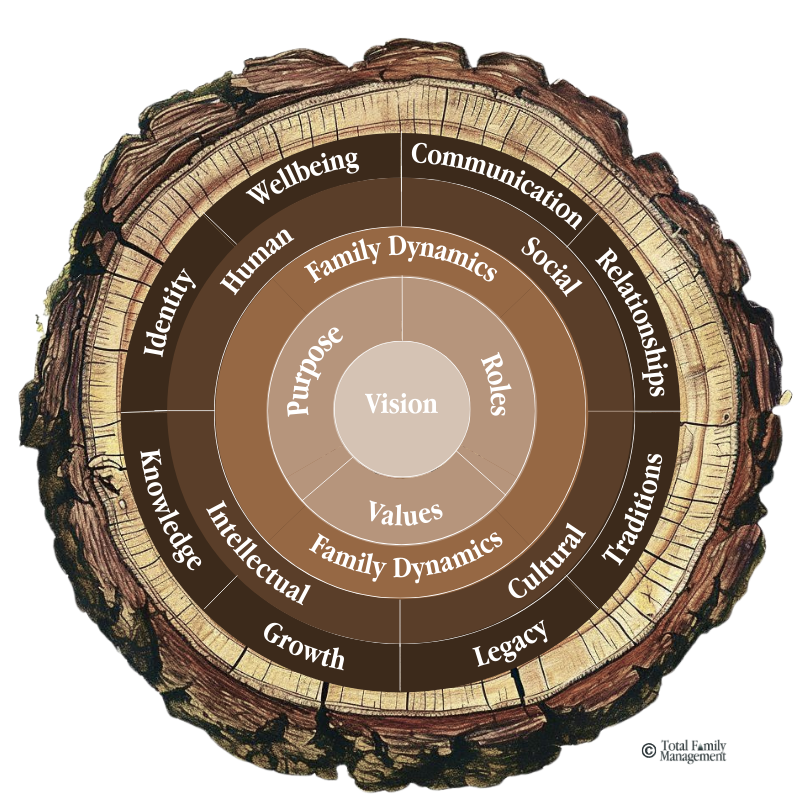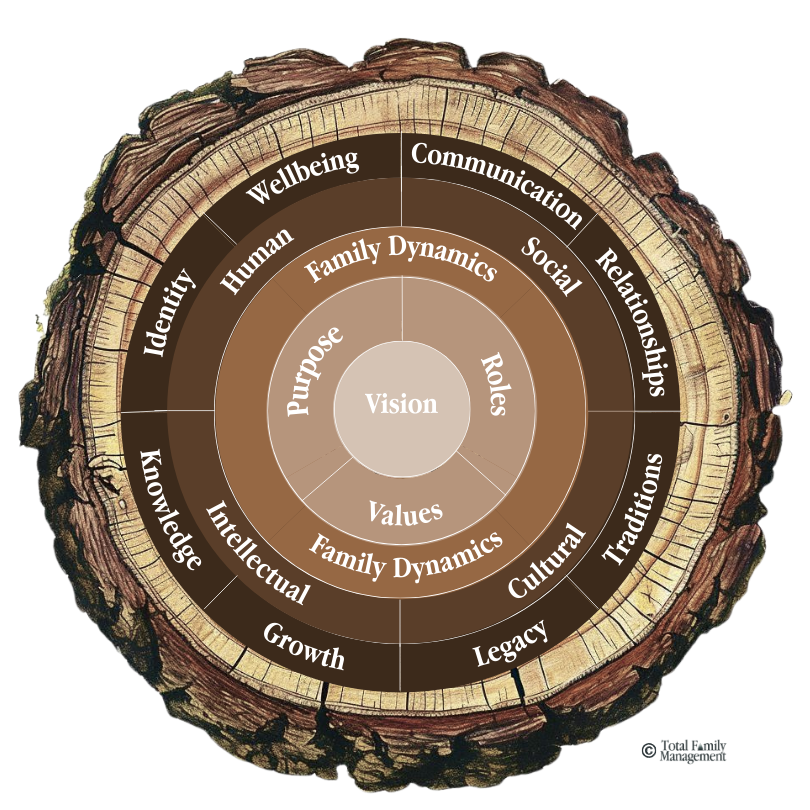How Strong Is Your Family Tree?
Our logo at TFM, fittingly, is a tree. 🌲 We’ve metaphorically "cut it down" to examine its trunk, revealing insights into what makes some family trees resilient and others less so.

Did you know that in any given tree, only about 1% of its structure is biologically alive? 😮 The remaining 99% consists of dead cells and non-living components. Interestingly, this concept mirrors the structure of our family trees. Why do some trees last longer than others? Why are some trees strong and others weak, blown over by a passing storm? Our logo at TFM, fittingly, is a tree. 🌲 We’ve metaphorically "cut it down" to examine its trunk, revealing insights into what makes some family trees resilient and others less so.

TFM's Methodology
The core of the tree is the vision. This includes the vision of the individual members but also the collective family; overlapping, not competing. Vision consists of purpose (why), values (what’s important), and roles (priorities). No tree lasts without a strong, healthy core. 🏋️♀️
The next layer we explore is known as family dynamics. These dynamics are in constant flux, influenced by new experiences, people joining and departing the family, births, deaths, and shifts in power and influence. While understanding these dynamics is feasible, controlling them is considerably more challenging.
Following family dynamics, we explore the well-being of the family through James E. Hughes's framework of the Five Forms of Family Capital: Financial, Human, Social, Cultural, and Intellectual. All forms of capital are represented in the Family Tree, except for Financial; money is notably absent, nowhere to be found. To learn more about these capitals, you can read here or listen here. 🔉
The final layer of the tree consists of 8 areas: Identity, Well-being, Communication, Relationships, Traditions, Legacy, Growth, and Knowledge. To assist our clients, we’ve developed definitions for each of these areas. For example, the term ‘legacy’ gets used a lot, but if you ask 10 people what legacy means, you’ll get 10 different answers. How can a family work to strengthen their tree if there’s ambiguity about what the words mean?
There are 2 important takeaways from the Family Tree:
It starts with vision; it’s the foundation. When a tree dies from the outside-in, it’s usually due to external forces like storms, but when a tree dies from the inside out, it’s due to rot and infection. We can’t control the weather, but we can control having a clear vision.
When I shared this Family Tree with Jay Hughes, he offered a profound insight that we now share with all our clients: When families view this graphic and reflect on their own dynamics, they often focus on their deficiencies—the areas where they feel lacking. 🛑 We advise against this approach. Instead, we adopt a Wealth 3.0 perspective, emphasizing our strengths.
Every family excels in something depicted in this graphic; that's where you should concentrate your efforts.
If your family has rich traditions, lean into them. If you have strong relationships, double down in that area. Consider the tree that leans yet refuses to fall. It may not be perfect, but it possesses undeniable strength in its core. And ultimately, that’s what really matters.
Follow TFM or sign up here to gain access to insights on family dynamics and exclusive family dynamics resources.
